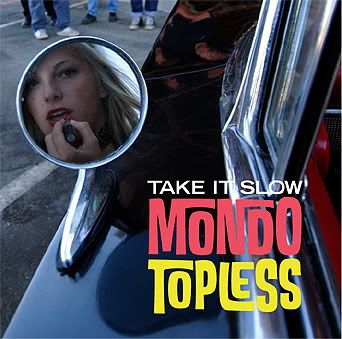
Dig
Wormtone Records
How do you review a surf album? It's surf music! It takes a careful ear and an incredible background in surf music, which had its apex in 1963. I'm no expert, but lucky for me, surf music and the sounds contained purposely describe the feeling of surfing. I'm at a loss again. I don't surf. Back to the drawing board. Okay, a couple of things I know. Muted reverb and tremolo. I'm not a musician, but I understand the terms now. Here goes.
How can a landlocked surf band be a "real" surf band? The answer is simple. Most well known surf bands like The Trashmen and The Ventures were not from places where people surfed. Surf music is based on feeling and attitude. The feeling is simple in attempting to recreate the feeling of surfing, which conveys ideas of freedom, skill, and most importantly, "carving" out something distinctive but doing so within boundaries of the music, which is itself the "wave." In other words, drums, bass, a rhythm guitar playing muted reverb, which sounds kind of like "bubbles," giving the sensation of water. It's then the job of a lead guitarist to do some carving within the musical framework. Kind of cool, huh? The attitude is therefore individual, but like hanging ten, it's laid back. One can't go too much against the surf foundation, but one can push the limits sometimes. The feeling of freedom also affects the attitude and therefore, surf music has always had an element of rebellion since surfing itself is an individual activity. Those feelings later transferred to hot rods since they were an expression of youth and freedome that more could identify with.
One not only need the attitude and feeling to create great surf music, but since guitar and solid music are so important, they need exceptional talent too, but they don't necessarily have to be surfers. Therefore, Austin's The Thunderchiefs are a landlocked surf band. On their debut album Dig, one hears and feels not only the elements of surfing and surf music, but also the different influences that created and contributed to it such as latin and Arab music.
Dig has a mix of both instrumental and vocal tracks, mostly recorded in mono. There's always been debate among surf music fans concerning adding vocals. Some consider surf music to be strictly instrumental, while music with vocals and a similar style are "beach music." However, the argument is a difference of opinion, not a definitive. Among the songs with vocals on Dig is the surf ballad "Pretty Eyes," which conjures images of a night time campfire after a day at the beach. Another vocal track "Our Last Night" breaks the surf ballad mode by using a lower male vocal that hearkens back to the '50s, but also features some great latin flavored surf guitar. Other tracks go straight to the water! The opening "Cry Of The Thunderchiefs" is a fast romp laden with muted reverb, which are the "bubbling" sounds you hear! The lead guitar is tight, loud, and rides with the waves of the songs while "carving" out some tasty parts much like the lead guitar in traditional surf music. In tribute to the lighter hearted side of surf/hot rod imagery and humor, "Drag-n-Fly" is a hot buzz that sounds decidedly vintage with an insect guitar coupled with some more familiar, Dick Dale inspired licks that keep flying to keep "the buzz" from spoiling the picnic. As if one insect isn't enough, "Buzzard Coupe" is another fine track that echoes of revved up engines on dirt tracks.
A special treat on Dig is the Sir Finks classic "Wound Up!" with a melodic lead and some great reverb held into a traditional surf track. An ambitious effort with incredible results describes "Comanche Moon," a famous High Noon instrumental that has a beat and reverb reminiscent of The Shadows classic "Apache." As in historical parallel of the replacement of surf music by garage rock in the mid '60s, the last titled song on Dig is a raunchy, lo-fi garage rocker a la Sonics mixed with subtle background vocals that could be nothing but flavored by The Kinks "You Really Got Me" that bears little in common with the rest of the album except for the lead guitar with a bit more distorted reverb.
The Thunderchiefs Dig has a lot to offer. It's mostly recorded in mono and the music and instrumentation lean more towards traditional surf rock, so it offers surf music fans a great nostalgia trip, but the musical result is raw and free, much like the lifestyle and the ocean that spawned the genre. The Thunderchiefs are also somewhat of an Austin surf garage supergroup with Joe Emery on bass, one of Austin's most talented songwriters and performers and member of The Ugly Beats, Mike Guerrero, formerly of the memorable surf trio (then foursome) The Sir Finks, but also known as a premier surf guitar player, followed by former Fink (and others) drummer Bobby Trimble, then rounded out with Shaun Young, an amazing guitar player for the Austin rockabilly legends High Noon and The Shifters. The incredible blend of talents and rock roots in The Thunderchiefs result in superb, mostly traditional surf rock, but the combined talents and backgrounds in roots rock music results in surf rock going backwards to become new again. It's great rock 'n' roll. If this is my introduction and education in surf rock (ands your too), we're off to a damn good start.







No comments:
Post a Comment